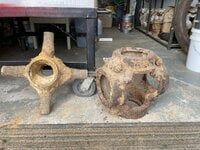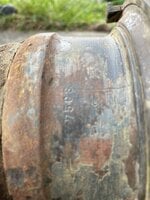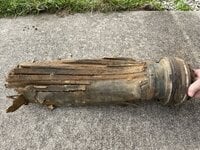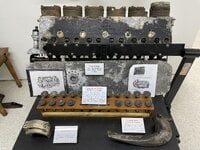Larrythepilot
Airman
The Freeman Army Airfield Museum has a storage room (used to house a coal furnace) that we call the Dig Room. It is where we store WWII aircraft parts that were dug up at Freeman Army Airfield in the late 90's, and some from 2008-2013, that have not yet been cleaned up/identified. Many of the parts you folks have helped to identify came out of that room. With the identification of the hydraulic operating cylinder for a Mk 9 Spitfire a couple of weeks ago, we have become interested in some other propeller parts. We have just begun to clean them up, and they are not yet ready for prime time in terms of finding numbers on them. However, we wonder if just the images of the uncleaned parts would rings any bells in the minds of you folks with a a lot of experience in these matters. Please have a look at the attached pictures, and let us know if you recognize any of these parts. Thanks.




